

 |
 |
LUZON Consisting of the tribes such as Ifugao, Benquet, Kalinga, Bontoc, Apayo, Kalinga, sometimes these are call Igorot. " But sometimes that is considered degrading ." Cordillerea name also used for some parts the Luzon Region... |
||
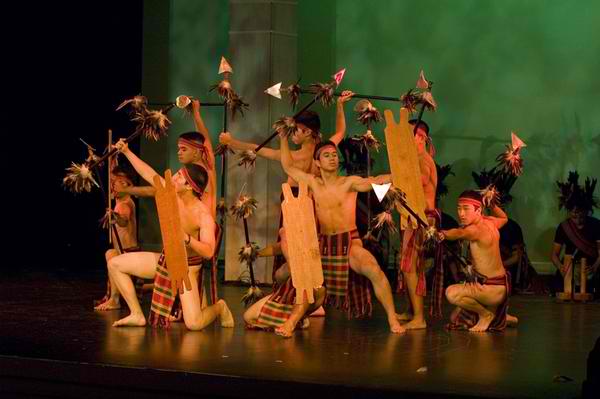 |
Idaw |
This dance sometimes has many names and different versions. Most common is this dance depicts the hunting ritual performed before a tribal war. The tribes men would go out and look up and watch for the scared Idaw bird. Which is said to lead the tribe to victory. Also look at the clothing, Philippines being a very hot climate, plus the use of as little material as possible, the traditional clothing was not made to cover much of the body.... |
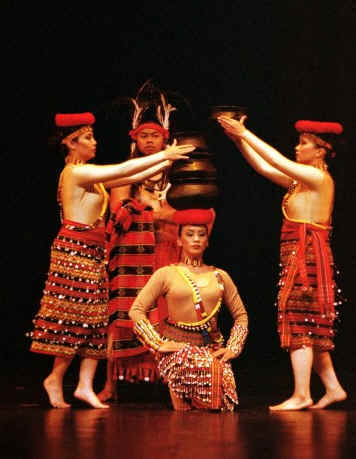 |
Banga |
This dance displays the Igorot women on their way to the river to fetch the daily water supply for thier familys. It shows the skill and strength of the women as they would carry heavy laiden clay pots (Banga) full of water. Their grace and agility while balancing the heavy pots, sometimes stacks 5 high, is a testiment of the Filipino and how hardships become a art form and talent. As a young girl you would start with only one pot. Of course as you become older and more experienced, along with the fact that you could provide more water for your family in one trip. Pots could be stacked as high as 5 or 6. The more pots you could carry showed your skill and also you standing amoung the women of that area. They would all gather and march to the river each day, singing a native song which is represented by the flute and banging of bamboo on iron pots in the dance...... |
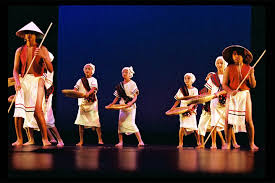 |
Idudu |
The family is the basic structure of family life among the Itneg / Tinggian poeple. The caring for the Children is shared by both the mother and father. While the men are clearing the fields, breaking the soil with bamboo and their feet, the women watch the children. Soon as the men are done, they take care of the children while the women do back breaking work. You can see in the dance how the women will take the bamboo baskets in a shaking fashion like drying the rice, while the men are going in circles in background like they are toiling the land. Then you will see the women put down the baskets fold the cloth into a baby while the husband stands aside. Then the women will turn over the baby to the husband, pick up the bamboo and start toiling the land while the men hold and cradle the babys. |
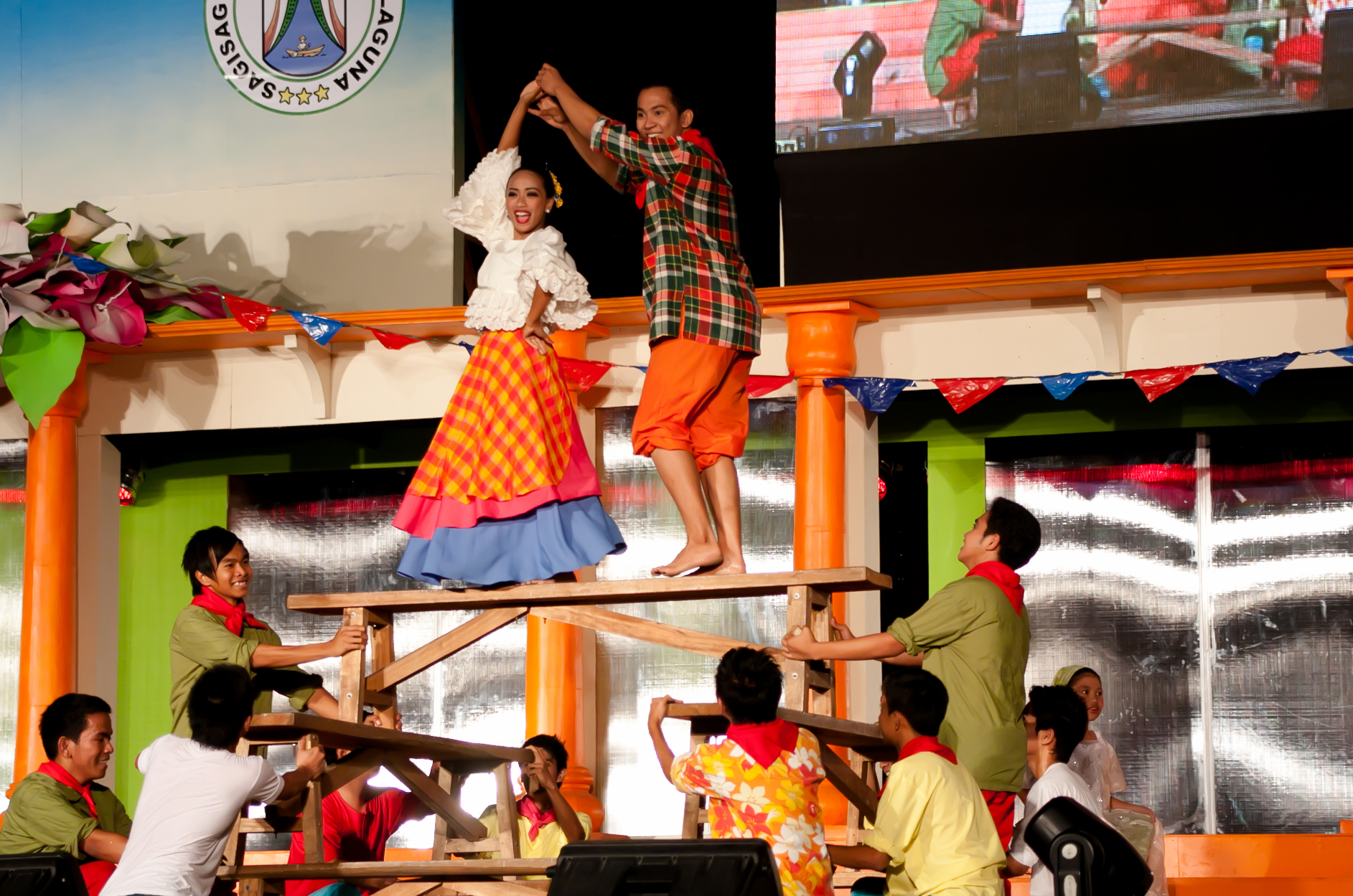 |
Sayaw Sa Banko |
This dance is native to the barrio of Pangapisan, Lingayen, Pangasinan, and demands skill from its performers who must dance on top of a bench roughly six inches wide. |
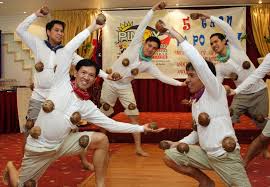 |
Maglalatik |
Originally performed in Binan, Laguna as a mock-war dance that demonstrates a fight between the Moros and the Christians over the prized latik or coconut meat during the Spanish rule, this dance is also shown to pay tribute to the town’s patron saint, San Isidro Labrador. It has a four-part performance such as the palipasan and the baligtaran showing the intense battle, the paseo and the escaramusa- the reconciliation. Moro dancers wear read trousers while the Christian dancers show up in blue. All dancers are male; with harnesses of coconut shells attached on their chests, backs, thighs and hips |
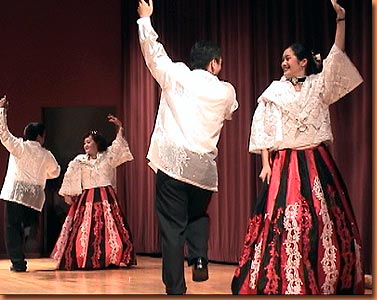 |
Maria Clara |
Maria Clara is the main female character in Jose Rizal's Noli Me Tangere -a literary piece that features the colonial situation of the Filipinos during the Spanish regime. She was characterized as a Filipina woman of virtue and nobility. This dance is a mix of Spanish gracefulness and customized native props, such as bamboo castanets and Asian fan. Female dancers wear Maria Clara dress that typifies the European style, while men are in barong tagalog, a traditional Filipino embroidered long-sleeve shirt made of pineapple fiber. |
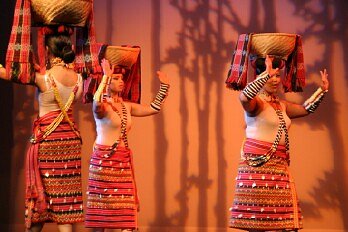 |
Ragsaksakan |
The word means " Merriment". This dance would be performed after a successful headhunt and also for a peace pact between waring tribles. The colorful hand woven blankets " blankets of life" are worn around the neck while baskets to carry produce or rice are worn upon the head. Some versions of this dance use the " Banga " instead of the basket. |